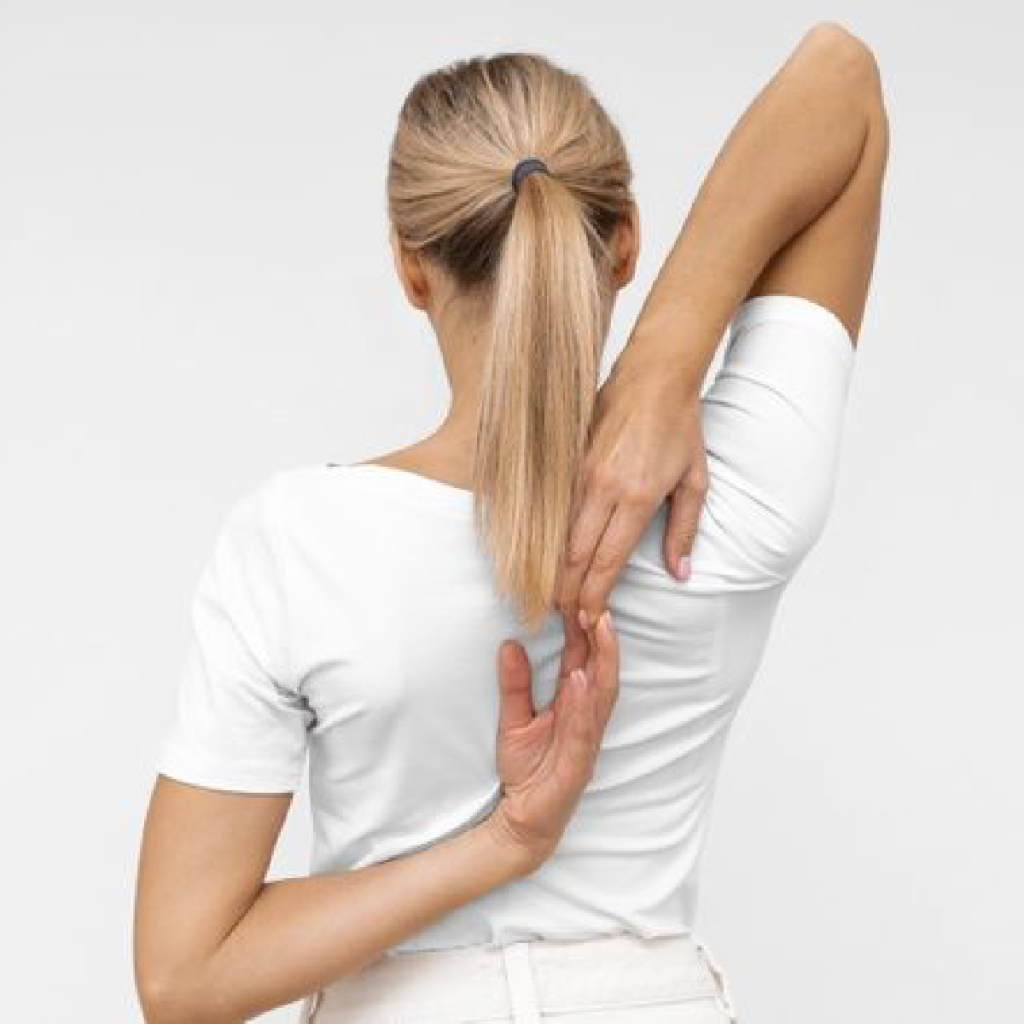Discover how physical therapy can effectively manage joint issues and improve overall mobility.
How Physical Therapy Can Help Manage Joint Issues
Joint issues can be a real pain in the neck, or rather, in the knees, hips, elbows, and everywhere else! But fear not, dear reader, for physical therapy has come to the rescue! In this article, we will explore the incredible ways in which physical therapy can help manage joint issues and get you back in the swing of things.

Understanding Joint Issues
Before we dive into the wonders of physical therapy, let’s take a moment to understand what joint issues are all about. Joints are like the hinges that keep our bodies moving smoothly, allowing us to bend, twist, and turn without a hitch. However, sometimes these remarkable little hinges can get a bit rusty or wobbly, leading to discomfort and pain.
When it comes to joint issues, there’s a wide range of conditions that can affect our precious hinges. From the notorious osteoarthritis to the troublesome tendonitis, joint problems come in all shapes and forms. Osteoarthritis, the most common type of arthritis, occurs when the protective cartilage that cushions the ends of the bones wears down over time, causing pain and stiffness. Tendonitis, on the other hand, is the inflammation or irritation of a tendon, which can result from overuse or repetitive movements.
But joint issues don’t stop there. There are many other conditions that can wreak havoc on our joints. Rheumatoid arthritis, for example, is an autoimmune disease that causes the body’s immune system to mistakenly attack the joints, leading to pain, swelling, and stiffness. Gout, another common joint problem, is a form of arthritis that occurs when uric acid crystals build up in the joints, causing sudden and severe pain.
Common Types of Joint Problems
Oh, the woes of joints! From the notorious osteoarthritis to the troublesome tendonitis, joint problems come in all shapes and forms. Whether it’s the achy pain of rheumatoid arthritis or the unwelcome surprise of a dislocated joint, there’s no denying that these issues can really put a damper on our everyday activities.
Let’s talk a bit more about osteoarthritis, shall we? This degenerative joint disease is often associated with aging, as the wear and tear on the joints over time can lead to the breakdown of cartilage. As the cartilage deteriorates, the bones may rub against each other, causing pain, swelling, and stiffness. Osteoarthritis commonly affects the hands, knees, hips, and spine, making simple tasks like gripping objects or walking up the stairs a challenge.
Tendonitis, on the other hand, is a condition that often affects athletes or individuals who engage in repetitive activities. The tendons, which connect muscles to bones, can become inflamed or irritated due to overuse or excessive strain. This can cause pain, tenderness, and swelling in the affected area, making it difficult to perform certain movements or activities.
Symptoms and Diagnosis of Joint Issues
Is it just a passing ache or something more sinister? Diagnosing joint issues can sometimes be as tricky as untangling a ball of yarn. Common symptoms include pain, stiffness, swelling, and difficulty moving the affected joint. However, it’s important to note that these symptoms can vary depending on the specific condition and severity of the joint problem.
When it comes to diagnosing joint issues, a medical professional will typically start by conducting a thorough physical examination. They may ask about your medical history, including any previous injuries or conditions that may be contributing to your joint problems. In some cases, imaging tests such as X-rays, MRIs, or CT scans may be ordered to get a closer look at the affected joint and assess the extent of the damage.
In addition to physical examinations and imaging tests, your doctor may also recommend blood tests to check for markers of inflammation or specific antibodies that are associated with certain types of arthritis. These tests can help confirm a diagnosis and determine the most appropriate course of treatment.
The Role of Physical Therapy in Joint Health
Now, let’s get to the juicy part – how physical therapy can come to the rescue and save our precious joints! Physical therapy is like a superhero, swooping in with its cape of knowledge and therapeutic techniques to help alleviate pain, improve mobility, and restore joint function. It’s like a smooth operator for our creaky hinges!
But what exactly does physical therapy entail? Let’s dive into the science behind this incredible field and explore the benefits it brings to our joint health.
The Science Behind Physical Therapy
Physical therapy is not magic, my friends. It’s a science, plain and simple. This superhero of the medical world uses evidence-based techniques to treat joint issues. It combines knowledge of anatomy, physiology, and biomechanics to create personalized treatment plans that address the root cause of the problem.
One of the key components of physical therapy is exercise. Therapists carefully select exercises that target specific muscles and joints, aiming to improve strength, flexibility, and range of motion. These exercises are designed to address imbalances, correct posture, and enhance overall joint function.
In addition to exercise, physical therapists also utilize manual therapies. These hands-on techniques involve skilled manipulation of the joints and soft tissues to reduce pain, increase blood flow, and promote healing. From joint mobilization to soft tissue massage, these techniques are tailored to each individual’s unique needs.
Furthermore, physical therapy incorporates various modalities such as heat, cold, electrical stimulation, and ultrasound to further enhance the healing process. These modalities can help reduce inflammation, relieve pain, and improve tissue extensibility.
Benefits of Physical Therapy for Joint Issues
Oh, the wonders of physical therapy! Not only does it help reduce pain and improve joint flexibility, but it also strengthens the surrounding muscles, promoting better stability and preventing future issues. It’s like giving your joints a makeover – they come out looking and feeling fabulous!
By addressing the underlying causes of joint problems, physical therapy aims to provide long-term relief and improve overall quality of life. It empowers individuals to take an active role in their own health and well-being, teaching them exercises and techniques they can continue to practice even after their therapy sessions have ended.
Moreover, physical therapy is not limited to treating acute injuries or chronic conditions. It can also be used as a preventive measure, helping individuals maintain optimal joint health and reduce the risk of future problems. Regular physical therapy sessions can keep joints well-oiled and functioning smoothly, ensuring a lifetime of pain-free movement.
So, the next time you find yourself struggling with joint pain or limited mobility, remember that physical therapy is there to save the day. With its scientific approach, personalized treatment plans, and holistic approach to joint health, physical therapy truly is a superhero in the world of healthcare.
Different Physical Therapy Techniques for Joint Issues
Just like a master chef with their recipe book, physical therapists have an array of techniques to choose from when treating joint issues. Let’s take a look at some of the crowd favorites:
Manual Therapy
Imagine a therapist gently kneading and manipulating your joints, easing away tension and restoring their natural range of motion. Ah, pure bliss! Manual therapy is like a spa day for your joints – relaxing, rejuvenating, and oh-so-soothing.
During a manual therapy session, the therapist uses their hands to apply pressure and perform various techniques on your joints. They may use gentle stretching, mobilization, or manipulation to improve joint mobility and reduce pain. The therapist’s skilled touch can help release tight muscles, break up scar tissue, and improve blood circulation to the affected area.
One popular technique in manual therapy is joint mobilization, where the therapist gently moves the joint through its range of motion to improve flexibility and reduce stiffness. This technique can be particularly beneficial for individuals with conditions like arthritis or frozen shoulder.
Another technique often used in manual therapy is soft tissue mobilization. This involves applying pressure to the soft tissues surrounding the joint, such as muscles, tendons, and ligaments. By targeting these tissues, the therapist can help alleviate muscle spasms, reduce inflammation, and improve overall joint function.
Exercise Therapy
If you thought exercise was only for fitness fanatics, think again! Exercise therapy is a key ingredient in the physical therapy recipe. With targeted exercises tailored to your specific joint issues, you’ll be flexing those biceps and saying goodbye to pain in no time.
Exercise therapy aims to strengthen the muscles around the affected joint, improve flexibility, and enhance overall joint stability. The therapist will design a personalized exercise program based on your specific needs and goals. These exercises may include stretching, resistance training, balance exercises, and functional movements.
For individuals with joint issues, exercise therapy can be a game-changer. It helps improve joint lubrication, reduces inflammation, and promotes the growth of new cartilage. Regular exercise also releases endorphins, which are natural painkillers, providing relief from joint discomfort.
Additionally, exercise therapy can improve your overall fitness level, making you less prone to future joint issues. It can also help with weight management, as excess weight puts extra stress on the joints, leading to increased pain and discomfort.
Hydrotherapy
Who doesn’t love a good dip in the pool? Hydrotherapy takes the wow-factor up a notch by incorporating the soothing power of water into your therapy sessions. The buoyancy of water reduces joint stress, allowing for pain-free movement and rehabilitation. It’s like a splashy party for your joints!
Hydrotherapy, also known as aquatic therapy, involves performing exercises and movements in a pool or other water-based environment. The water provides a supportive and low-impact environment, making it ideal for individuals with joint issues or those recovering from surgeries.
During hydrotherapy sessions, you may perform a variety of exercises, such as walking or jogging in water, swimming, or using water resistance for strength training. The resistance provided by the water helps to build muscle strength without putting excessive strain on the joints.
The warm water used in hydrotherapy sessions also has therapeutic benefits. It helps to relax muscles, increase blood circulation, and reduce pain and stiffness in the joints. The buoyancy of the water supports the body, reducing the impact on the joints and allowing for greater freedom of movement.
Hydrotherapy can be particularly beneficial for individuals with conditions like osteoarthritis, rheumatoid arthritis, fibromyalgia, or joint injuries. It provides a safe and enjoyable way to improve joint mobility, reduce pain, and enhance overall physical well-being.
Preparing for Your Physical Therapy Sessions
What to Expect During Your First Session
It’s time for your physical therapy debut! Don’t fret, my friend, because knowing what to expect can calm those pre-session jitters. During your first session, your therapist will assess your joint issues, gather all the necessary information, and devise a personalized treatment plan just for you. It’s like having your own personal superhero sidekick!
Tips for Maximizing Your Therapy Benefits
Want to get the most bang for your buck, or rather, the most relief for your joints? Listen up! Remember to follow your therapist’s instructions diligently, practice good posture, and incorporate the recommended exercises into your daily life. It’s like giving your therapy sessions a high-five – teamwork makes the dream work!
Long-Term Management of Joint Issues with Physical Therapy
Now that you’ve experienced the wonders of physical therapy, it’s time to look to the future – to a life of joint bliss and pain-free adventures! But how do we keep those joints happy in the long run? Fear not, for I have the answers!

Maintaining Joint Health Post-Therapy
Consistency is key when it comes to keeping those joints in top-notch condition. Regular exercise, maintaining a healthy weight, and avoiding activities that put excessive strain on the joints are all essential for long-term joint health. It’s like giving your joints a VIP pass to a lifetime of happiness!
Incorporating Physical Therapy into Your Daily Routine
Physical therapy shouldn’t just be a temporary fling; it needs to be a lifelong commitment. Incorporating the techniques and exercises you’ve learned into your daily routine will ensure continuous improvement and prevent any relapses. It’s like adding a sprinkle of physical therapy magic to your everyday life!
Conclusion
And there you have it, folks! Physical therapy is like a knight in shining armor, ready to rescue our joints from the clutches of pain and immobility. With its evidence-based techniques and targeted approach, physical therapy offers a glimmer of hope for those struggling with joint issues. So, embrace the power of physical therapy, take control of your joint health, and embark on a journey towards pain-free living! Your joints will thank you endlessly.







